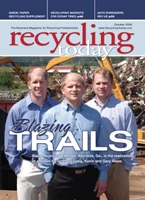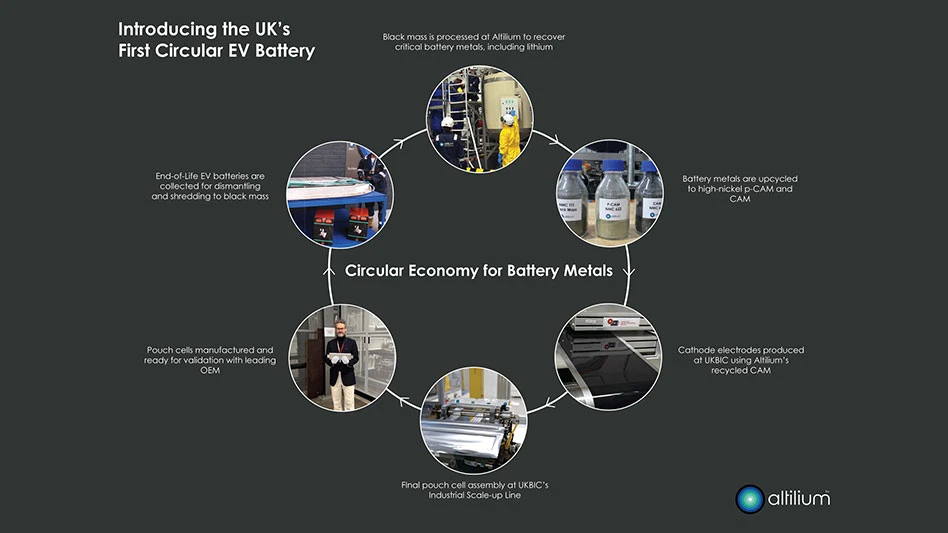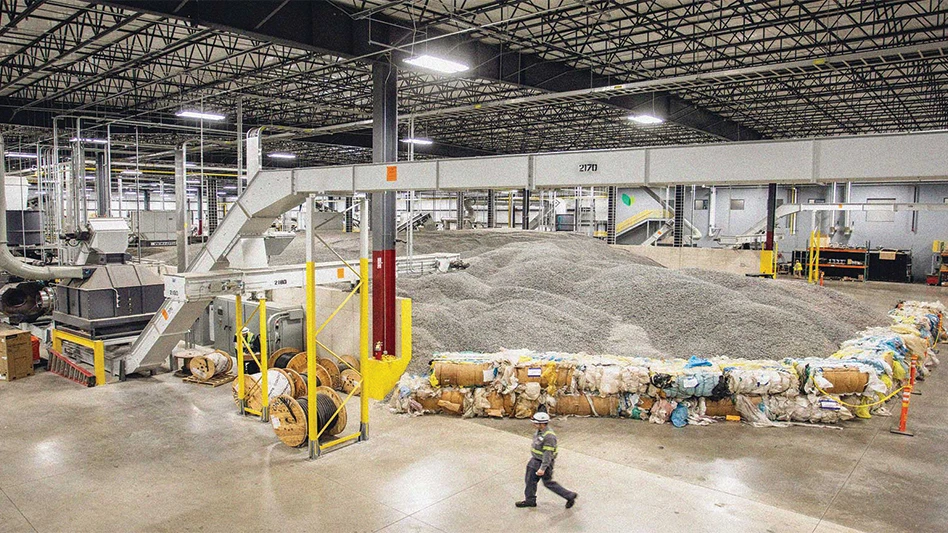Reverse logistics, at its core, was formed to address the issues of products returned to manufacturers by customers. To date, the industry’s focus has been handling the return of large items in very small quantities or small items in relatively larger quantities. Examples include a dead-on-arrival printer returned to an OEM or a box of 1,000 unsold lipsticks.
Information technology asset disposition, the management of the retirement of used high-tech assets from an organization, presents unique challenges for reverse logistics. The challenges result from picking up and transporting large quantities of heavy high-tech assets from client locations to asset disposition providers. Many of these assets possess hard drives that store important company and consumer data that is subject to state and federal privacy laws. In addition, a myriad of state and local regulations govern the recycling of old information technology.
Reverse logistics companies that demonstrate expertise in the area of IT asset disposition will find an enormous opportunity for growth in the next five years as they help clients mitigate the privacy risks associated with the transportation of high-tech assets.
U.S. businesses are expected to retire hundreds of millions of high-tech assets—computers, servers, monitors, printers, networking equipment, etc.—each year for the foreseeable future. The primary challenges in providing reverse logistics for retired high-tech assets are:
• Hard drives in transit often possess private consumer and client data.
• Lost or stolen items represent potential liability in light of privacy and environmental laws.
• The assets are heavy and retired in large quantities.
• High-tech assets must be packaged and palletized by reverse logistics suppliers.
• Many of the items are portable and/or of high value.
• High-tech assets can also be retired in extremely small quantities from multiple locations.
| Reverse Logistics Association |
|
Editor’s note: This feature originally appeared in the Spring/Summer issue of Reverse Logistics Magazine, a bi-monthly publication of the Reverse Logistics Association (RLA) with a circulation of 50,000 readers worldwide. As reverse logistics is a process that crosses all industries, readers represent the high-tech, retail, medical, pharmaceutical, automotive and aerospace sectors, as well as many more. Reverse Logistics Magazine provides the latest information on areas such as repair, customer service, parts management, EOL manufacturing, service logistics, field service, returns processing, asset management and disposal. The Reverse Logistics Association’s mission is to educate and inform RL professionals around the world through conferences, seminars and publications. Conferences are held annually in the United States, Europe and Asia, with seminars offered monthly throughout various parts of North America. RLA also offers RL Quote, an RFI posting service, at no cost to its member companies. More information about Reverse Logistics Magazine and the Reverse Logistics Association is available at www.RLmagazine.com and www.reverselogisticsassociation.org, respectively. |
• On-site serial number capture by reverse logistics firms is cumbersome and costly.
This article outlines each of these unique challenges and provides guidelines for use in the formulation of an effective reverse logistics strategy for IT asset disposition.
DATA AND ENVIRONMENTAL RISK. Last year, hundreds of computers from the city of Houston were discovered in a landfill in Lagos, Nigeria. The resulting media coverage created an immediate firestorm for Houston. Similar stories happen dozens of times per year and are driving governments and environmental groups to put enormous pressure on large corporations to take greater responsibility for the ultimate disposition of their used information technology.
Unlike new or recently purchased products that are returned to a manufacturer, retired high-tech assets have been used for three to four years. During that time, their hard drives have stored vital company and consumer information subject to state and federal privacy laws, such as HIPAA (Health Insurance Portability and Accountability Act) and the Gramm-Leach-Bliley Act. Hard drives can potentially have other customer information and confidential corporate information that companies want to protect. Therefore, corporations are taking increasing responsibility for the permanent removal of information from retired hard drives by partnering with IT asset disposition solution providers.
Numerous state and local laws govern the environmental policies for the recycling and disposal of high-tech assets. More than 60 pieces of legislation are pending in 40 states that deal with end-of-life electronics. Corporations are subject to fines and bad press if their retired high-tech assets are not disposed of properly, case in point, the city of Houston.
The confidential data issues, coupled with environmental risks, make the chain of custody for retired assets one of the most important aspects of the reverse logistics process. It is critical that reverse logistics organizations be able to provide serial number capture for each asset at the time of pickup. This ensures that assets that may be stolen or lost in transit can be accurately identified in order to indemnify clients from the potential liability associated with the improper disposal of these stolen or lost assets. Additionally, we recommend that clients perform hard drive encryption prior to pickup and transport. Encryption eliminates the potential privacy risk associated with data on the hard drive of a server, laptop, personal computer or mass storage device lost or stolen in transit.
LARGE AND SMALL SHIPMENTS. Companies most often retire high-tech assets as part of an overall refresh strategy, resulting in hundreds or thousands of assets being removed from a specific location at once. The reverse logistics process may have to account for 55 laptops, 62 desktops, 10 printers and 54 monitors that are not packaged.
Reverse logistics organizations are not accustomed to handling large quantities of heavy, unpackaged items and conducting serial number capture at the time of pickup. This results in the potential loss or theft of items in the transportation process. Repackaging at the reverse logistics firm’s hub can increase shrinkage—the disappearance of assets through negligence or criminal activity—and breaches of data security, particularly if there is not serial number capture at the outset.
Clients expect their reverse logistics supplier to demonstrate the proper security for high-tech assets in transit and a chain of custody at every step in the shipping process.
Conversely, issues also surround a cost-effective solution for the pickup of small quantities of assets. Many companies have multiple office locations with only two or three high-tech assets. Most of these companies would prefer the reverse logistics organization handle all packaging. This is often not very cost effective; in fact, it can be prohibitively expensive.
There is a significant opportunity for reverse logistics companies that can capitalize on the unique challenges presented by the large and small quantity shipments of used high-tech assets.
ABSENCE OF PACKAGING. Unlike returns, retired high-tech assets rarely have proper packaging for shipping. This creates several problems for reverse logistics organizations. There are no uniform packaging standards for retired high-tech assets. Most reverse logistics companies simply shrink-wrap groups of monitors, personal computers or servers. Shrinkage of items, like laptops, is prevalent in the industry because of the lack of uniform packaging and serial number capture at the time of pickup.
The ideal packaging standard for retired high-tech assets will show signs of tampering by simple visual inspection. This packaging standard should be combined with the on-site serial number capture of each retired asset. This combination not only helps reduce shrinkage, it helps mitigate data security breaches and problems with improper disposal.
HIGH-VALUE ITEMS. Retired high-tech assets, like laptops and servers, can have significant resale value. Some companies redeploy retired assets from one location to another. Others sell retired high-tech assets in the secondary market, where used computers, depending upon configuration, can command up to $800 per asset.
The physical condition of the computer is an important part of its overall value. Any cosmetic damage will significantly reduce the resale value and the financial return to the client. Therefore, it is critical that the reverse logistics firm properly package assets for successful delivery to the IT asset disposition solution provider.
Sponsored Content
Labor that Works
With 25 years of experience, Leadpoint delivers cost-effective workforce solutions tailored to your needs. We handle the recruiting, hiring, training, and onboarding to deliver stable, productive, and safety-focused teams. Our commitment to safety and quality ensures peace of mind with a reliable workforce that helps you achieve your goals.
IT ASSET DISPOSITION. Many large corporations are recognizing the value of IT asset disposition (ITAD) because of the regulatory compliance risks associated with the retirement of information technology.
While ITAD has been around for nearly 10 years, many companies are hiring firms to manage the risks associated with ITAD like permanently deleting information from hard drives, remarketing assets into the secondary market, managing charitable donations and recycling assets with no reuse or remarketing value.
Large corporations look to reverse logistics companies as the link between the deinstallation of information technology and the ITAD process.
Unique challenges presented by retired high-tech assets demand new policies and approaches to reverse logistics. Of course, each reverse logistics company will have to tailor its procedures to fit its business model. As a founder of the IT asset disposition industry, I have found the following guidelines important in establishing effective policies for removal of used high-tech assets from client organizations:
• Make sure all reverse logistics employees understand the value and risk associated with each individual retired high-tech asset;
• Build an effective chain of custody for each serialized asset that can be shared with the client and the ITAD company;
• Build an effective packaging solution that mitigates shrinkage;
• Develop a cost-effective solution for small pickups; and
• Ensure that clients have an effective hard drive encryption solution prior to asset pickup.
THE OPPORTUNITY. The IT asset disposition industry is growing at an exponential pace and shows no signs of slowing. Understanding the unique challenges will help reverse logistics companies take advantage of the incredible ITAD opportunity.
The author is chief operating officer for Intechra. She can be reached at cindy.brannon@intechra.com.
Get curated news on YOUR industry.
Enter your email to receive our newsletters.

Explore the October 2006 Issue
Check out more from this issue and find your next story to read.
Latest from Recycling Today
- Returpack reports increased DRS activity in Sweden
- Trade groups align against European export restrictions
- Construction, auto sectors show mixed signals
- Politics in Turkey threaten recycled steel outlet
- Toppoint Holdings expands chassis fleet
- Lego creates miniature tire recycling market
- Lux Research webinar examines chemical recycling timetables
- Plastics producer tracks pulse of wire recycling market







